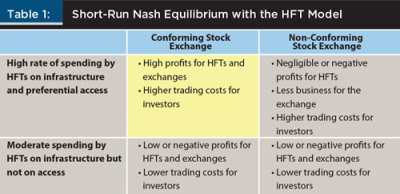Journal of Financial Planning: May 2015
Matt Hougan is president of ETF.com, where he oversees the company’s editorial, data and analytics efforts, and conferences.
According to data from O’Shaughnessy Asset Management, this is the hardest environment for generating income in the history of investing. That’s not an exaggeration: the hypothetical yield on a balanced 60 percent equity/40 percent bond portfolio is the lowest it’s been since at least 1876, the last date for which we have reliable data. In fact, the current yield on that portfolio (< 2 percent) is less than half the long-term average (4.76 percent).
However, there are currently 11 ETFs on the market paying more than 10 percent in annual yields. Are these funds a good bet? My colleagues Paul Britt and Scott Burley recently examined these mega-yielding funds in a webinar, and their answer was clear: probably not.

Let’s start with leveraged ETFs, which use swaps to guarantee 200 percent or 300 percent of the daily return (and therefore 200 or 300 percent of the yield) of different segments of the market. That sounds great, but most of these funds have trailed a simple investment in the S&P 500 over the past year, despite their gaudy yields.
Next are master limited partnership (MLP) ETFs, which have become popular as sources of yield. Funds like Yorkville High Income MLP ETF (YMLP), and the Morgan Stanley Cushing MLP High Income ETN (MLPY) take the core concept of MLP investing and dial up the risk by piling into smaller companies. Unfortunately, that risk can cost you in the wrong market. YMLP has gotten clobbered in the past year, posting a total return of roughly –28 percent.
The next highest-yielding ETF, the iShares Mortgage Real Estate Capped ETF (REM), buys mortgage REITs. REM’s yield reaches into the stratosphere because the companies it buys are hugely leveraged. Levering up on mortgages works swimmingly when the market’s doing well, but gets ugly when things go south. During the 2008 financial crisis, for instance, REM fell 43 percent. Over the past year, REM has posted total returns only half that of simpler, non-leveraged real estate plays like the Vanguard REIT ETF (VNQ). And income from REM is taxed as ordinary income, so you should probably look twice before you buy.
The next group are oddball situations. The iShares Global Telecom (IXP) and Global X Brazil Financials (BRAF) ETFs make the list, but their high-looking yields aren’t actually real. Consider IXP. About a year ago, Vodafone—one of the largest holdings in IXP—paid the largest dividend in corporate history. IXP looks like a huge dividend player, and on a run-rate basis, it’s still a good dividend ETF, but it’s never going to see a 12 percent yield again. BRAF has similar one-off factors driving its yield profile.
Perhaps the most interesting ETF on the list is the Recon Capital NASDAQ 100 Covered Call (QYLD). It takes a position in NASDAQ 100 stocks and writes calls against that position to generate income. The high yields it produces may be sustainable, but a covered call gives you almost all of the potential downside of a straight equity position with essentially none of the upside.
Despite their double-digit yields, almost all of the ETFs in the table underperformed to a straight market-cap weighted alternative. That’s not to say that these strategies don’t work (they could be perfect for certain portfolios) but they are not without their unique risks.